Where is the best coffee in Indonesia? comparison between West Java Coffee and Mantenin Coffee
For professional baristas, please follow the coffee workshop (Wechat official account cafe_style)
Indonesian coffee bean Indonesia
Indonesia is a large archipelago country composed of many volcanic islands, with excellent coffee growing environment and latitude, and each island has different characteristics due to different topography and climate.
The coffee islands in Indonesia are: Sumatra of Sumatra, Sulawesi of Sulawesi, Java of Java, Sumbawa of Sumbawa, Flores of Flores and Papua of Papua Province. Among them, Sumatra is the main coffee growing place in Indonesia, and the most famous Mantenin coffee comes from here.
It's all Indonesian coffee, so what's the difference between Mantenin and West Java coffee? The front street coffee compared the two beans.
Sumatra is divided into two producing areas, the first is Aceh Aceh in North Sumatra and the second is Linton in Lake Dorba in the south-central part of the country. The most famous planting area in Aceh is the Gayo Mountains, which surrounds Lake Tawa, and is the main producing area of Mantenin, at an altitude of 1100-1300 meters. Mantenin refers to Arabica coffee in northern Sumatra, which derives its name from the local Manning people. Lindong is located in the southwest of the largest lake in Sumatra: Tobahu, which is an important source of boutique coffee in Indonesia.

Java, the first island in Indonesia to grow coffee beans, was introduced by the Dutch East India Company in about the 16th century. The island of Sulawesi is the producing area of another famous Indonesian coffee "Toraga", which is located in the southern mountains of the equatorial island of Sulawesi. Arabica raw beans were brought about by the early Dutch colonization, and at that time it was famous as Celebes Kalossi (Selbis-Carosi). Later, the Japanese entered Toraga to improve the local industry and quality of coffee, and made Tolaga famous in Asia. Indonesian coffee beans are mainly treated by semi-washing, which is classified by the proportion of defective beans and the number of hand selection of defective beans.

Treatment method
The beans in West Java are picked manually to ensure the stability of the fruit. After picking, the exocarp is peeled off and the flesh is preserved for sun treatment, which is what we call the sun + honey treatment. After about a month of sun drying, wash and other treatment, and then let the beans stored for about half a month before packaging.
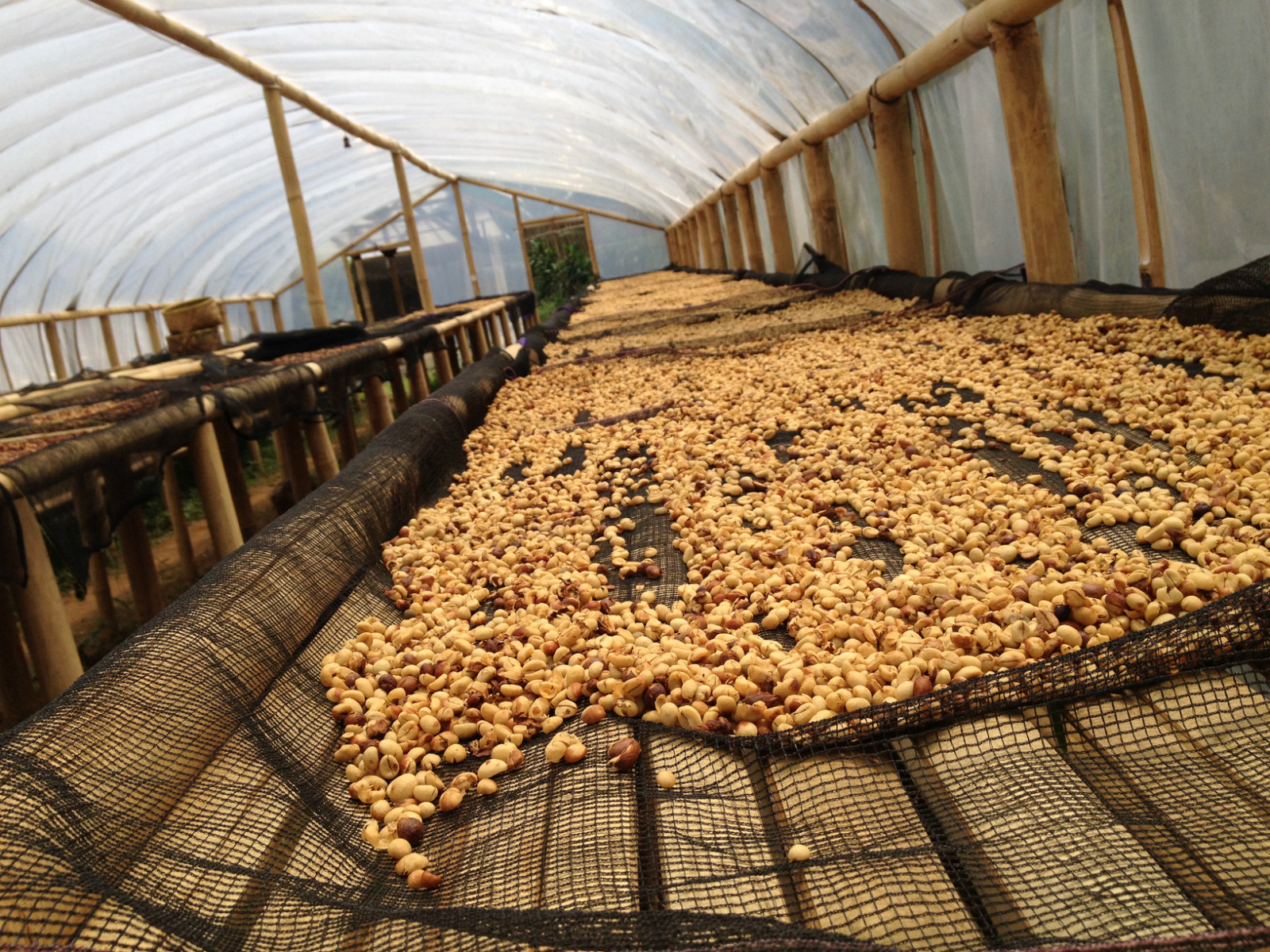
Sun + honey treatment, the only purpose of this complex and high-risk process is to create a more complex and fuller taste spectrum. Reflect the wonderful feeling brought by the complex pedigree of this bean.

Indonesia Manning uses the wet planing method, also known as wet shelling method Wet Hulling, also known as Giling Basah in the local language, is the traditional Indonesian coffee treatment. Judging from the name alone, the wet planing method is very similar to the wet treatment (water washing treatment). However, the cup flavor of the two treatments is very different. The coffee treated by the wet planing method is usually mellow and strong, and the personality is very distinct.
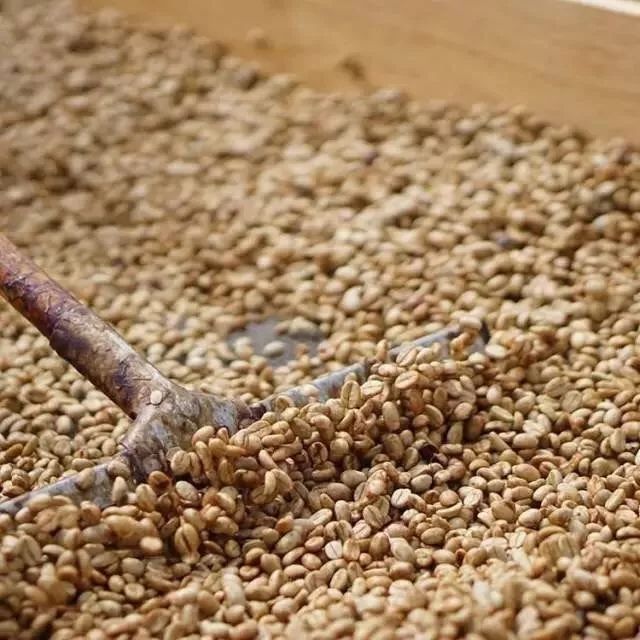
Steps of wet planing treatment
① removes peel and pulp and retains parchment and mucous membrane.
② tank fermentation
③ washing off mucous membrane
④ with parchment is sun-dried for 2-3 days to 20-24% moisture content.
⑤ scraped off the parchment
⑥ dries raw beans to 12-13% moisture content.
⑦, prepare for exit.
Coffee variety
The inexplicable and amazing variety of beans in West Java, Indonesia belongs to S795. Known as Jember in Indonesia, S795 is introduced by Jember Coffee Research Center, a coffee research center in East Java, to Javanese farmers after introducing local varieties from India, and Javanese farmers directly call this S795 Jember.

S795 bean body color is blue and green, its original tree species natural variation comes from S288, while S288 is an excellent hybrid variety cultivated in India in 1946. S288 was named S26 after being mixed with Typica and S288 (the first generation), because the first generation of S288 was crossed between Arabica and Liberian Liberica and always had the fishy smell of Liberia. Indian botanists then used the first generation of S288 and Typica hybrid Kent and the second generation of S288 to become the present S795.
The current S795 variety is of Liberian blood, but its flavor is more elegant after carefully cultivated by Indian botanists. at the same time, due to inheriting the characteristics of strong disease resistance and high yield, the Indonesian and Indian governments have been vigorously promoting the cultivation of this variety in recent years.
From the complex life experience of S795, we can see that it is an artificially selected hybrid variety with Typica and liberica lineages in its blood, and years of careful breeding have created its unique flavor.
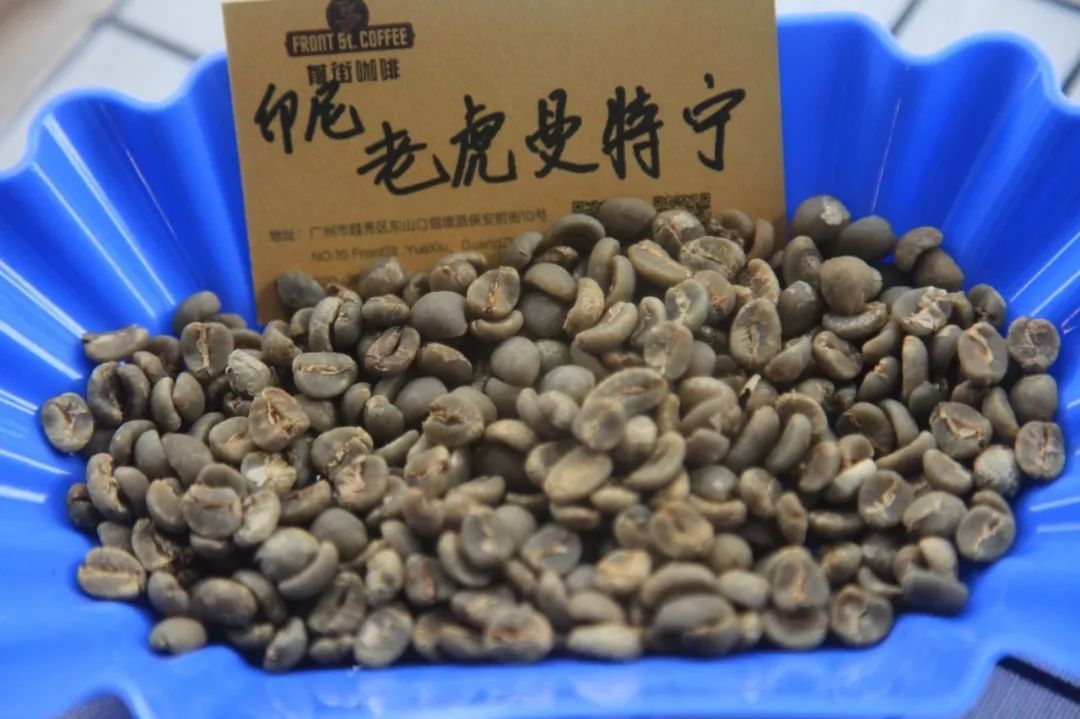
The breeds of Indonesian tiger Mantenin are Kaddura, iron pickup and Sidikalong.
Kaddura tastes sour with lemon or citrus taste and is not as sweet as iron pickup and bourbon in terms of sweetness, because Kaddura's sweetness depends on the number and dose of fertilizer applied by growers, and has high production capacity, but continuous fertilization and pruning are necessary to maintain production capacity, so the trees are short and branched. Although production capacity has increased, production is still limited because of the two-year harvest period and the high cost of care.
Iron pickup is the closest variety to the original species. The bean shape is slightly longer, like an elongated egg, known as Arabigo or criollo in Central America. There is a clean citric acid taste, sweet aftertaste, low resistance to leaf rust, making it not easy to take care of, low seed setting, coupled with a long harvest period (harvest every two years), the yield is not much.

Flavor comparison
[West Java, Indonesia]
Dry aroma: strong aromas of flowers, dried fruit and red wine
The sour taste is gentle and not bright, keeping it elegant under a variety of complex fruit flavors.
In view of the obvious flavor of preserved fruit, the whole tends to be mellow and strong in texture, but not too thick.
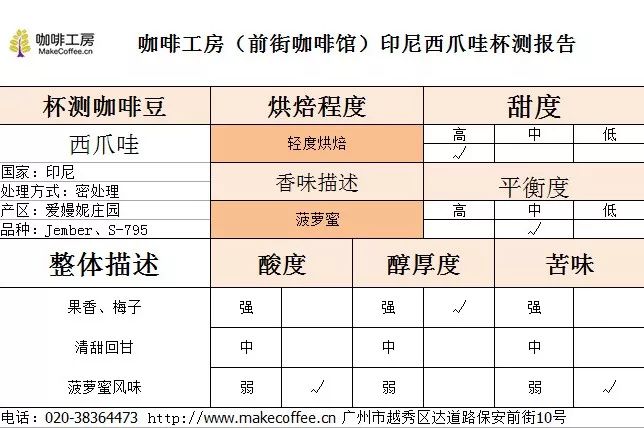
The main feature of this bean is its complex sweetness and fruity aroma, which is more obvious than the African Yega Chuefei, which is also famous for its floral aroma. Its taste spectrum is inclined to the tropical fruits with heavy flavors such as mango and polo honey, which are complex and calm, while the unique honey treatment techniques bring a faint flavor of red wine. This bean is a typical example of sweetness, even in the global coffee pedigree.
[Indonesia Mantenin]
This tiger manning is well-balanced and clean, with obvious flavors of cream, dark chocolate and nuts.
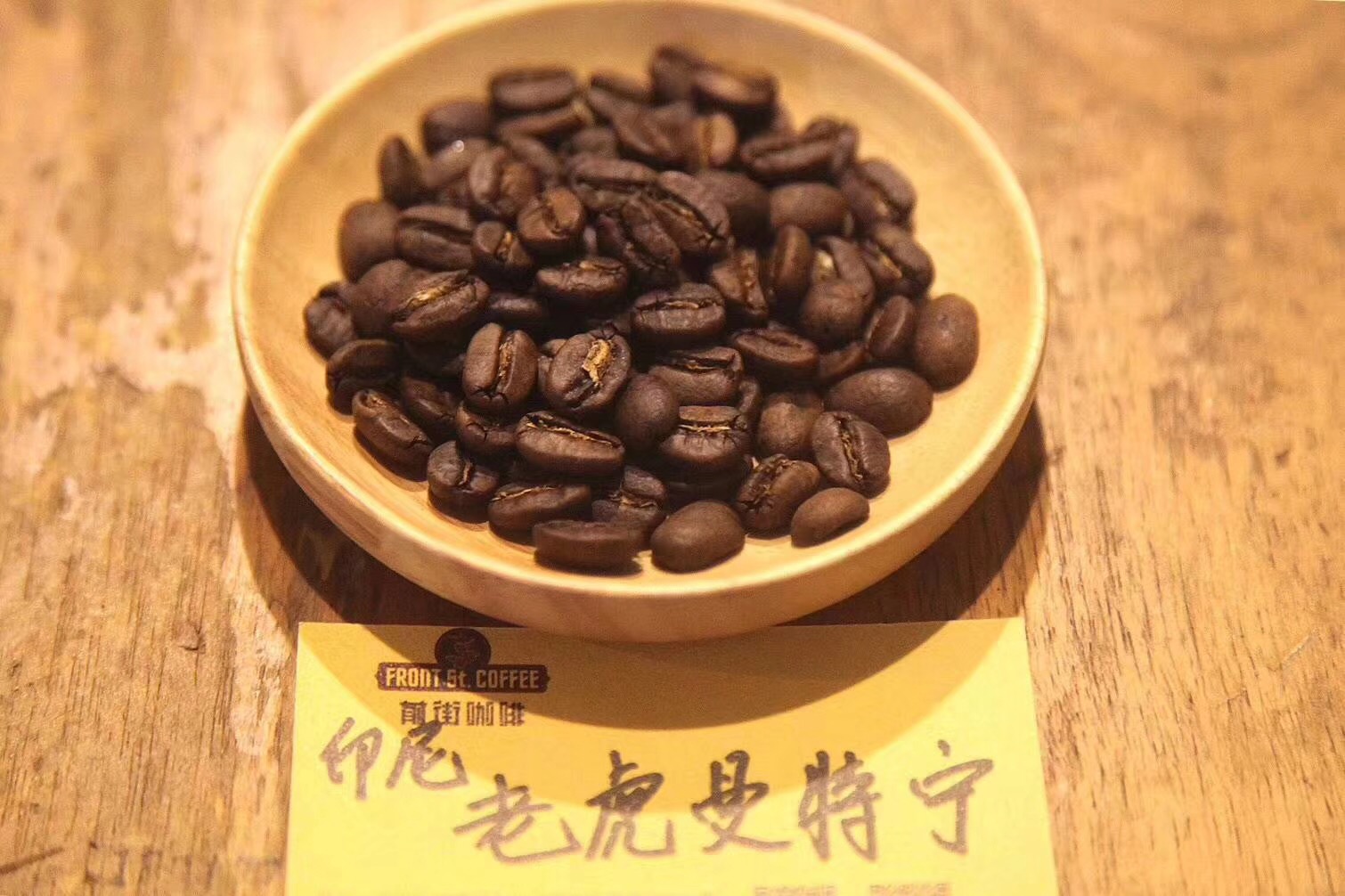
Important Notice :
前街咖啡 FrontStreet Coffee has moved to new addredd:
FrontStreet Coffee Address: 315,Donghua East Road,GuangZhou
Tel:020 38364473
- Prev
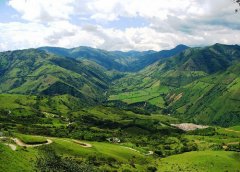
Columbia Coffee hand-made course Santa Marta Coffee producing area Bayenado Snow Mountain Coffee beans
Professional coffee knowledge exchange more coffee bean information please pay attention to the coffee workshop (Wechat official account cafe_style) Colombian coffee basic knowledge and flavor description of hand-made Colombian coffee brewing parameters suggest hand-washed Colombian single-product beans. 15g powder, medium fineness grinding (sugar size), v60 filter cup, 89-90 degrees water temperature, 30 g water injection for the first time.
- Next
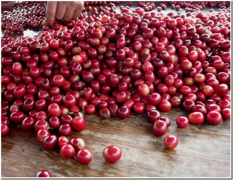
Columbia Snow Mountain Coffee Santa Marta Mountain-Bayernado single Coffee Bean Flavor
Professional coffee knowledge exchange more coffee bean information please follow the coffee workshop (Wechat official account cafe_style) the basic knowledge and flavor description of Colombian coffee Colombia Santa Marta Vallenato Colombia is located in northwest South America, bordering Venezuela and Brazil in the east, Ecuador and Peru in the south, Panama in the northwest and the Caribbean Sea in the north.
Related
- Detailed explanation of Jadeite planting Land in Panamanian Jadeite Manor introduction to the grading system of Jadeite competitive bidding, Red bid, Green bid and Rose Summer
- Story of Coffee planting in Brenka region of Costa Rica Stonehenge Manor anaerobic heavy honey treatment of flavor mouth
- What's on the barrel of Blue Mountain Coffee beans?
- Can American coffee also pull flowers? How to use hot American style to pull out a good-looking pattern?
- Can you make a cold extract with coffee beans? What is the right proportion for cold-extracted coffee formula?
- Indonesian PWN Gold Mandrine Coffee Origin Features Flavor How to Chong? Mandolin coffee is American.
- A brief introduction to the flavor characteristics of Brazilian yellow bourbon coffee beans
- What is the effect of different water quality on the flavor of cold-extracted coffee? What kind of water is best for brewing coffee?
- Why do you think of Rose Summer whenever you mention Panamanian coffee?
- Introduction to the characteristics of authentic blue mountain coffee bean producing areas? What is the CIB Coffee Authority in Jamaica?

